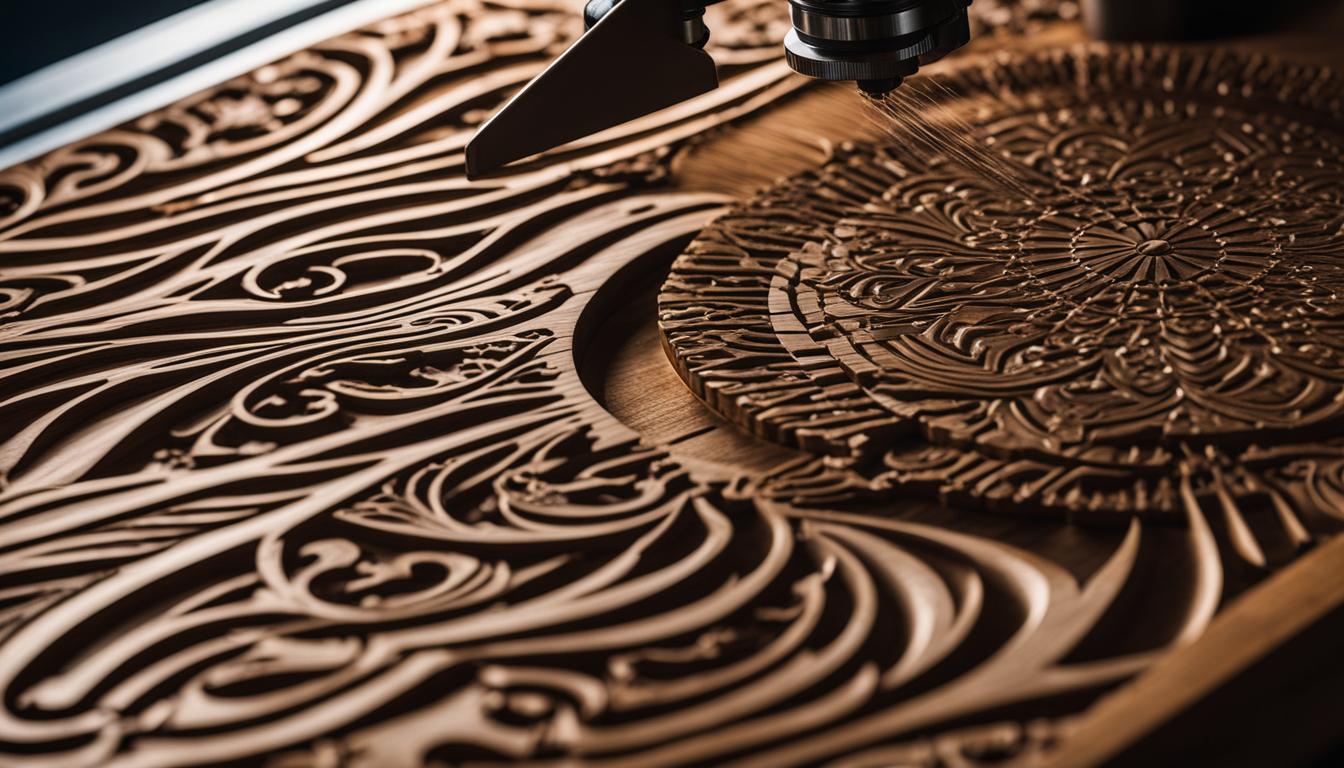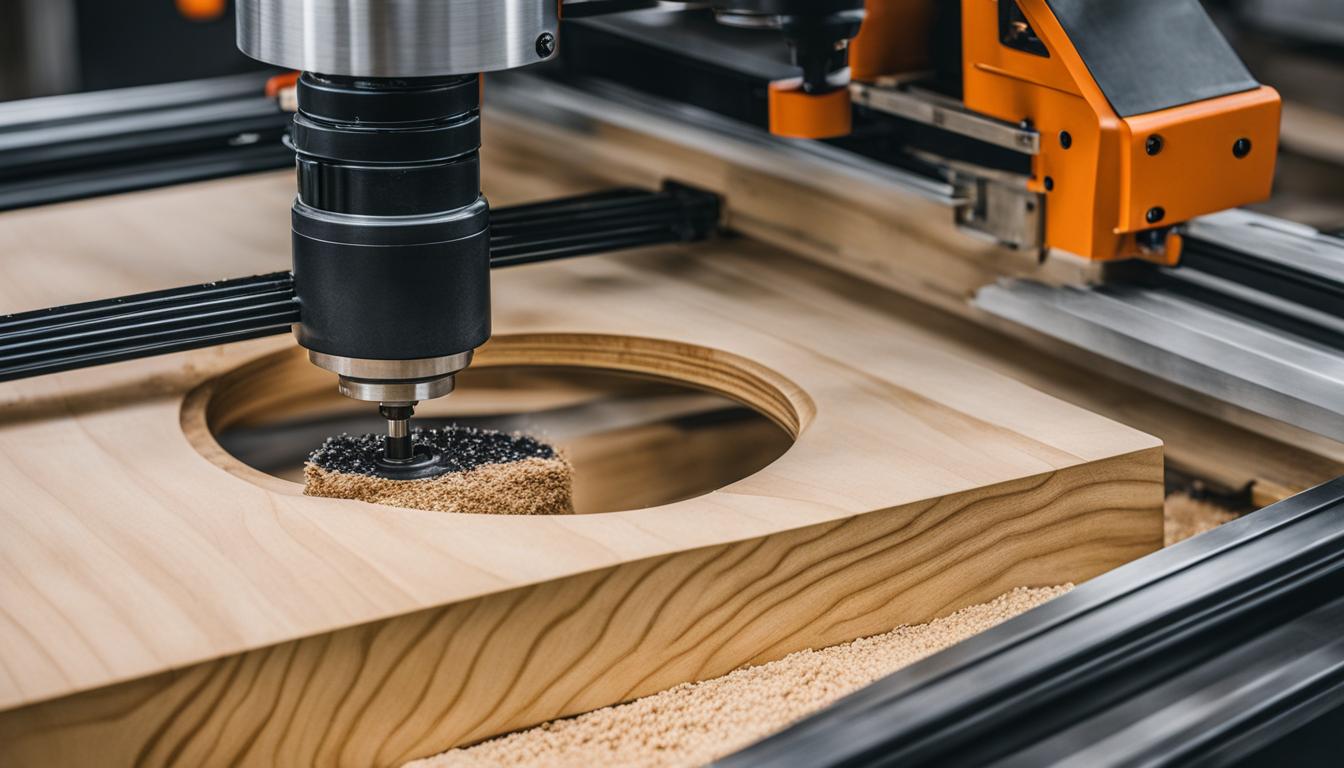Yes, you can use a CNC machine for both wood and metal, but there are important differences in the setup and operation. CNC routers are typically used for softer materials like wood, plastic, and foam, while CNC mills are designed for harder materials like metals. The same CNC machine can often be used for both wood and metal projects, but adjustments in tooling, speeds, and feeds are necessary. CNC routers for woodworking generally operate at higher speeds (13,000 to 24,000 RPM) and have larger bed sizes to accommodate sheet materials.
They also often feature built-in dust collection systems. For metal cutting, CNC mills operate at lower speeds and require more robust tooling to handle the increased hardness of the material. When cutting metals like aluminum on a CNC router, special considerations are needed, such as using carbide-coated bits, adjusting feed rates, and employing proper cooling and lubrication techniques.
The versatility of CNC machines allows for a wide range of applications in both woodworking and metalworking, from creating furniture components to manufacturing precision metal parts.
- A CNC machine can be used for both wood and metal cutting and machining processes.
- It can perform tasks such as cutting, milling, carving, drilling, and grooving with precision and efficiency.
- Various types of CNC machines, including routers and mills, are available for woodworking and metalworking projects.
- CNC machines are widely used in industries such as furniture making, sign making, and custom woodworking.
- They offer efficiency, accuracy, and the ability to create high-quality products.
What is a CNC Wood Router?
A CNC wood router is an automatic computer-controlled machine tool used for cutting, milling, carving, drilling, and grooving on various woodworking projects. It combines the precision of computer-controlled automation with the versatility of woodworking capabilities. Whether you’re working on wood arts & crafts, signs making, cabinets making, door making, or furniture making projects, a CNC wood router can help you achieve accurate and intricate designs.
The CNC wood router consists of several essential components that work together to deliver precise results. These components include:
- Bed Frame: The sturdy frame that serves as the foundation of the machine and provides stability during operation.
- Spindles: The motorized spindles that rotate cutting tools, such as router bits or end mills, at high speeds.
- Vacuum or T-Slot Table: The work surface that holds the wood material securely in place during cutting and ensures accurate positioning.
- Controller: The electronic control unit that receives instructions from the computer and translates them into movements and actions.
- Operating System: The software that runs on the controller and manages the machine’s operations.
- Software: CAD/CAM software that allows users to create or import designs and convert them into tool paths for the CNC wood router to follow.
- Additional Parts & Accessories: Various attachments, clamps, dust collection systems, and tool changers that enhance the machine’s functionality and versatility.
A CNC wood router can handle different cutting tasks, including 2D, 2.5D, and even complex 3D cutting. It offers precision and efficiency, making it an invaluable tool in industries such as furniture making, sign making, cabinets making, door making, and more.
| Type of CNC Wood Router | Applications |
|---|---|
| Desktop CNC Wood Router | Ideal for small-scale woodworking projects |
| Benchtop CNC Wood Router | Suitable for hobbyists and DIY enthusiasts |
| Industrial CNC Wood Router | Designed for high-volume and professional woodworking operations |
How Does a CNC Wood Machine Work?
A CNC wood machine operates using computer signals to control the movement of the spindle and cutting tool. This advanced technology allows for precise and efficient woodworking processes. Let’s explore the key components and operations involved in the functioning of a CNC wood machine.
The Components of a CNC Wood Machine
A CNC wood machine comprises several essential components:
- Spindle: The spindle is the motor-driven component responsible for rotating the cutting tool. It is crucial for the creation of intricate designs and precise cuts.
- Axes: CNC wood machines typically have three axes: X, Y, and Z. The X-axis controls the front-to-back movement, the Y-axis enables left-to-right movement, and the Z-axis governs the up-and-down movement of the cutting tool. These axes allow the machine to execute complex operations in multiple directions.
- CAD/CAM Software: Computer-Aided Design/Computer-Aided Manufacturing (CAD/CAM) software is utilized to create designs and convert them into toolpaths. This software serves as the interface through which users can input their desired woodworking projects.
The Working Process of a CNC Wood Machine
Here’s a breakdown of how a CNC wood machine operates:
- The user creates a design using CAD/CAM software. This design can range from 2D flat woodworking projects to intricate 3D woodworking projects.
- The CAD/CAM software generates instructions that control the machine’s drive system, including the movement of the X, Y, and Z axes. These instructions are transmitted as computer signals to the machine.
- The spindle, with the cutting tool inserted, is set in motion according to the programmed toolpaths. The CNC wood machine’s computerized control system ensures precise and accurate cutting, carving, and machining.
- The machine executes the programmed operations, resulting in the creation of the desired woodworking project.
By leveraging computer signals and CAD/CAM software, CNC wood machines provide woodworkers with enhanced precision, efficiency, and versatility. Whether it’s 2D flat woodworking projects or complex 3D woodworking creations, these machines open up a world of possibilities in the realm of woodworking.
To further understand the different types of CNC wood machines available, let us explore the various classifications and their specific features in the upcoming section.
What Are the Types of Wood CNC Machines?
Wood CNC machines come in various types, each offering different table sizes, applications, and axis configurations. These factors play a crucial role in determining the suitability of a machine for specific woodworking needs. Let’s take a closer look at the different types of wood CNC machines:
Table Sizes
The table size of a wood CNC machine determines the available work area and the size of the materials that can be processed. The range of table sizes varies from compact 2×3 machines to larger 6×12 machines. Choosing the right table size depends on the scale of your woodworking projects and the space available in your workshop.
Applications
Wood CNC machines cater to a wide range of applications, from home and hobby use to commercial and industrial-scale production. These machines are commonly used in woodworking industries such as furniture making, sign making, cabinetry, and more. Understanding the intended application of the machine helps in selecting the most suitable type.
Axis Configurations
The number of axes is an important consideration when choosing a wood CNC machine. The axis configuration determines the machine’s ability to move and position the cutting tool in different directions. Common axis configurations include:
- 3 Axis CNC Wood Routers: These machines operate along the X, Y, and Z axes, enabling precise cutting and shaping of 2D flat woodworking projects.
- 4 Axis CNC Wood Routers: In addition to the X, Y, and Z axes, these machines feature a 4th axis, often referred to as a rotary axis. This allows for the machining of cylindrical or curved surfaces, opening up more possibilities for intricate designs.
- 5 Axis CNC Wood Routers: These advanced machines provide even greater flexibility by incorporating a 5th axis. This additional axis enables complex machining tasks and the creation of highly detailed 3D woodworking projects.
Choosing the appropriate type of wood CNC machine depends on the specific requirements of your woodworking projects. Consider the table size, intended application, and axis configuration to ensure you have the right machine for your needs.
| Table Size | Applications | Axis Configuration |
|---|---|---|
| 2×3 | Home, hobby | 3 Axis |
| 4×4 | Small-scale production, desktop | 3 Axis, 4 Axis (optional) |
| 4×8 | Commercial use, large-scale production | 3 Axis, 4 Axis, 5 Axis |
| 5×10 | Industrial use, high-volume production | 3 Axis, 4 Axis, 5 Axis |
| 6×12 | Industrial use, large workpieces | 3 Axis, 4 Axis, 5 Axis |

How Much Does a CNC Wood Router Cost?
The cost of a CNC wood router can vary depending on several factors, including size, features, brand, and capabilities. Whether you’re a hobbyist, enthusiast, or professional in the woodworking industry, there are options available for different price ranges and needs.
For entry-level machines suitable for hobbyists, prices typically range from $2,580 to $5,280. These machines offer basic functionality and are ideal for those on a budget.
For enthusiasts looking for more advanced features and precision, professional-grade CNC wood routers can cost anywhere from $3,680 to $16,000. These machines offer higher performance and durability to accommodate more complex woodworking projects.
Commercial and industrial-grade CNC wood routers, designed for heavy-duty use, are more expensive due to their robust construction and larger size. Such machines can range from $18,000 to $120,000, depending on their capabilities and specifications.
When deciding on a CNC wood router, it’s important to consider your specific requirements, budget, and the complexity of the projects you plan to undertake. By assessing these factors, you can find a machine that best fits your needs without compromising on quality or functionality.

How to Choose the Best Controller and Router Bits for Woodworking?
When it comes to woodworking, choosing the right controller and router bits is crucial for achieving precise and high-quality results. The controller is responsible for managing the movement and operation of the CNC wood machine, while router bits are the cutting tools that shape the wood. Let’s explore the options available and what factors to consider when making these important choices.
There are various controllers available for woodworking, each offering different levels of control and functionality. One option is a computerized controller, which provides advanced features and allows for complex programming. Another option is a handle DSP controller, which offers a user-friendly interface and intuitive operation. Lastly, an all-in-one controller combines the benefits of both computerized and handle DSP controllers. When selecting a controller, consider factors such as ease of use, program compatibility, and control system performance to ensure a seamless woodworking experience.
In addition to the controller, the choice of router bits is equally important. Router bits come in a variety of types and sizes, each designed for specific cutting and shaping tasks. For woodworking, common router bits include straight bits, flush trim bits, dovetail bits, and roundover bits. The selection of router bits depends on the desired woodworking projects and the type of cuts required. It is recommended to invest in high-quality router bits made from durable materials to ensure clean and precise cuts.
When embarking on a woodworking journey with a CNC wood machine, the right controller and router bits can make all the difference. Consider the desired level of control, functionality, and ease of use when selecting a controller. Similarly, choose router bits that are suitable for the specific woodworking tasks at hand. By making informed choices, you can unleash the full potential of your CNC wood machine and achieve outstanding results in your woodworking projects.
